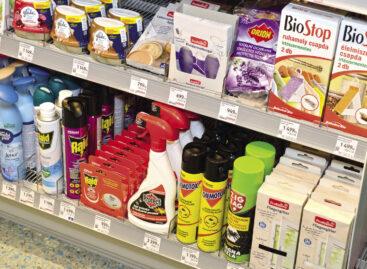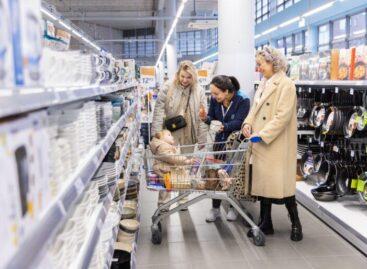Poison or trap?

Attila Zámbó
category manager
Bábolna Bio
Attila Zámbó, category manager of market leader Bábolna Bio Kft. told our magazine that sales of insecticides and insect repellents represented a value of HUF 6.08bn in 2021. Value sales dropped 7% from the 2020 level and volume sales reduced by 9%. Sales of crawling insect killers increased by more than 8% and this is rather a big growth, as this category represents almost 30% of the total market.
The company’s experience is that a growing proportion of shoppers prefer natural products or traps to “poisons”. Sales of Bábolna Bio Kft.’s 100% poison-free Biostop products are on the rise. Their Protect wasp killer aerosol spray is Hungary’s No.1 insecticide. In 2021 the company launched special mosquito and tick repellent aerosol spray Protect Incognito, which targets women.

Manufacturers’ brands absolutely dominate the market
Growing consumer consciousness

Nóra Tremmel
managing director
Brands and More Hungary
Nóra Tremmel, managing director of Brands and More Hungary Kft. informed Trade magazin that aerosol products are still the most popular. Skin-applied repellent use is increasingly frequent, and the company’s ZigZag brand offers a wide range of products in this segment. Brands and More Hungary Kft. specialises in wasp and ant killers, spirals, candles and skin-applied repellents, but this year they are upgrading their electric insect repellent portfolio too.
Italian brand ZigZag is characterised by high quality, innovation and a stylish design. The company is hopeful that these premium products (some of them are 100% essential oil based) will be successful in the Hungarian market, as growing consumer consciousness goes hand in hand with increased demand for poison-free, natural insect repellents.

Instead of „poisons” customers tend to seek insecticide-free solutions with natural active agents
//
Mosquito repellent dominates in the insect control market


Guest writer:
Annamária Major
client consultant
NielsenIQ
Hungarian consumers spent more than HUF 6bn on insect repellents and bug killers between March 2021 and February 2022. Value sales were 7% lower than in the base period, while volume sales dropped 9% at 7.5 million products. The high season for buying insect repellents is between May and September, when more than 80% of sales are realised.
There are two big product groups in the category: insecticides and insect repellents. The former are basically to be used in our homes, while the latter are to be applied to the body. Drugstores had the biggest share in total sales at 30%, but stores bigger than 2,500m² are right behind them at 28%. In the last season 98% of products sold were manufacturer brands. Although their sales performance worsened by 6% in value, that of private labels took a 17% dive. Mosquito repellent was the top product category, realising 19% of sales in the examined period; however, their sales decreased by 22%. Spray is the dominant product format, as more than half of products sold are some kind of spray, and aerosol had the biggest market share with 45%. //
Related news
Dishwashing: switched to eco mode
Last year the market of both dishwasher detergents and washing-up…
Read more >Itchy times are coming
Last year combined sales of insecticides and insect repellents were…
Read more >The latest research results of SPAR have shown that it is worth representing quality
Conscious customers consider it important that the products on the…
Read more >Related news
Anora Group’s expansion in the Baltic region
In order to strengthen its position in the Baltics, premium…
Read more >Prices rose by 3.7% in November
Following a 3.2% year-on-year increase in October, consumer prices in…
Read more >KSH: in November consumer prices exceeded the same monthly values of the previous year by 3.7 percent
In November, consumer prices exceeded those of a year earlier…
Read more >







